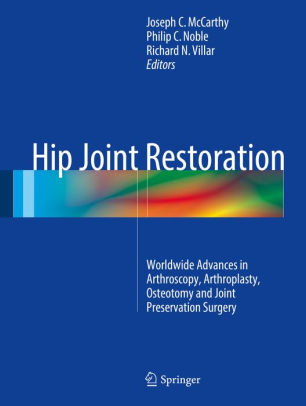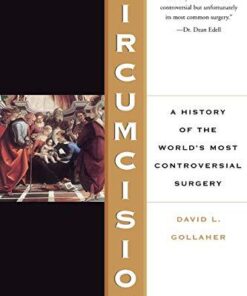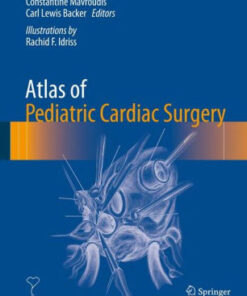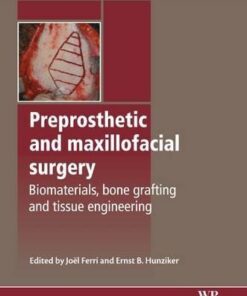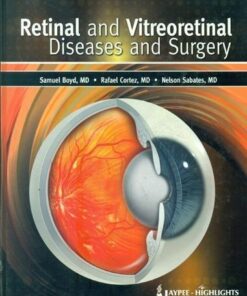(PDF) Hip Joint Restoration – Worldwide Advances in Arthroscopy by McCarthy
$22.00
Download instantly Hip Joint Restoration – Worldwide Advances in Arthroscopy, Arthroplasty, Osteotomy and Joint Preservation Surgery by Joseph C. McCarthy, Philip C. Noble. It is ebook in PDF format.
ISBN-10: 1461406935 ISBN-13: 9781461406938
Preview
This is the PDF eBook version for Hip Joint Restoration – Worldwide Advances in Arthroscopy, Arthroplasty, Osteotomy and Joint Preservation Surgery by Joseph C. McCarthy, Philip C. Noble
Table of Contents
Part One: Structure and Function of the Tissues of the Hip (Normal and Diseased).- Development of the Hip: Phylogeny and Ontogeny.- Anatomy – Cartilage.- Anatomy – Labrum.- Anatomy – Capsule and Synovium.- Fundamental and Clinical Considerations of the Muscles of the Hip.- Ligamentum Teres: Anatomy, Structure and Function.- Functional Mechanics of the Human Hip.- Part Two: Clinical Evaluation of Hip Function.- Function of the Normal Hip.- Outcome Instruments for Assessment of Hip Function.- Gait Analysis.- Evaluation of the Painful Hip.- Clinical Evaluation of Hip Function – Essential Features in the History.- Essential Findings in the Clinical Exam.- Part Three: Hip Pathology.- Osteoarthritis of the Hip.- Hip Disease Etiologies: FAI and Dysmorphias.- Synovial Pathology of the Hip.- Hip Pathology – Overload Syndromes.- Hip Disease Etiologies – Trauma.- The Understanding of Hip Etiologies – Osteonecrosis of the Femoral Head.- Part Four: Imaging Advances.- The Bony Morphology of Femoro-Acetabular Impingement.- Imaging of Cartilage Patho-Anatomy.- Magnetic Resonance Imaging of the Hip Labrum, Capsule and Synovium.- Extra-Articular Pathology of the Hip.- Magnetic Resonance Imaging of the Hip.- Imaging the Previously Operated Hip.- Advances in 2D and 3D Imaging for FAI Surgical Planning.- Part Five: Non Arthroscopic Treatment of Hip Disease.- The Natural History of Untreated Osteoarthritis of the Hip.- Non-Surgical Treatment (Indications, Limitations, Outcomes) – Injections.- Groin Pain in Athletes: Assessment and Non-Surgical Treatment.- The Painful Groin.- Limited Open Procedures.- Limitations of Open and Arthroscopic Surgical Technique for the Treatment of Femoroacetabular Impingement.- Open Surgical Treatment –Advantages and Complications of Modern Surgical Approaches.- Part Six: Arthroscopic Treatment of Hip Disease.- The History of Hip Arthroscopy.- Indications for Hip Arthroscopy.- Arthroscopic Treatment –Surgical Anatomy.- Hip Arthroscopy: Anatomy and Technical Pearls of the Procedure.- Arthroscopic Treatment – Principles of Hip Distraction.- Arthroscopic Treatment – Fundamentals of Hip Joint Instrumentation.- Arthroscopic Treatment – Principles and Devices for Hip Joint Access.- Arthroscopic Treatment- Layout of the Operating Room Surgical Approaches-Lateral.- Arthroscopic Treatment – Layout of the Operating Room- Surgical Approaches-Supine.- Optimizing Exposure and Accessibility for Arthroscopic Correction of Femoroacetabular Impingement.- Anesthesia and Analgesia for Hip Surgery.- Part Seven: Surgical Treatment of Specific Hip Conditions.- Biologic Labrum.- Specific Tissues and Conditions – Chondral Lesions.- Special Patients and Conditions – Femoro- Acetabular Impingement.- Arthroscopic Treatment of Combined Cam and Pincer-type Femoroacetabular Impingement.- Special Patients & Conditions: Other Forms of Impingement (Ischiofemoral, Pectineofoveal).- Synovial Disease.- Surgical Treatment of Specific Hip Conditions: Ligamentum Teres Injuries.- Treatment of Specific Conditions: Loose Bodies.- Specific Tissues and Conditions – Trauma.- Arthroscopic Treatment- Bony Lesions.- Specific Tissues and Conditions – Osteonecrosis, Avascular Necrosis.- Specific Tissues and Conditions – Pediatric Conditions.- Specific Tissues and Conditions – Extra-Articular Pathologic Conditions.- Part Eight: Special Patients and Conditions – Elite Athletes.- Special Patients and Conditions – Capsular Laxity Including Ehlers-Danlos.- Current Procedures and Techniques for the Treatment of Osteonecrosis of the Hip.- Special Patients and Conditions – Sports Hernia.- Acetabular Dysplasia: A Classification.- Quality-of-Life after Hip Arthroscopic Surgery.- Evaluating the Outcome of Hip Preserving Procedures: Patient Function, Satisfaction, and Impairment.- Part Nine: Articular Lesions: Prevention and Treatment.- Biology of Cartilage Regeneration.- Microfracture in the Hip.- Cartilage Grafting.- The Use of Fibrin Adhesive for Cartilage Repair in Hip Arthroscopy.- Novel Techniques in the Treatment of Chondral Lesions of the Hip.- Osteochondral Allografting of the Hip.- Part Ten: Hip Osteotomies.- Special Patients and Conditions – Acetabular Dysplasia.- Hip Osteotomies – Acetabular.- Birmingham Interlocking Periacetabular Osteotomy.- Mini-Incision Periacetabular Osteotomy.- Results of Periacetabular Osteotomy (PAO).- Proximal Femoral Osteotomy in Hip Preservation.- Combined Periacetabular Osteotomy and Proximal Femoral Osteotomy for Severe Hip Deformity.- Part Eleven: Joint Replacement.- Partial Joint Replacement.- Metal on Metal Hip Resurfacing: Current Indications and Results.- Total Hip Replacement in the Young Patient.- Short Stem Total Hip Replacement.- Hip Replacement in the Athlete.- Arthroscopy Following Total Hip Replacement.- Part Twelve: Functional Outcomes.- Activities, Symptoms and Expectations of Patients Undergoing Hip Surgery.- Rehabilitation after Hip Arthroscopy.- The Importance of Validated Scoring Systems for the Hip.- Survivorship and Clinical Results after Hip Arthroscopy: How Should We Define a Good Treatment Option?.- Part Thirteen: Worldwide Experience with Hip Arthroscopy.- UK and European Experience with Hip Arthroscopy.- Africa.- History of Hip Arthroscopy in the United States.- Worldwide Experience with Hip Arthroscopy – Australia.- Worldwide Experience of Hip Arthroscopy: Mexican Experience.- Worldwide Experience with Hip Arthroscopy: South America.- Hip Arthroscopy in India: A Perspective.- The Worldwide Experience with Hip Arthroscopy – Japan.- Hip Arthroscopy in China.- Part Fourteen: Practice Management and Education.- Setting Up a Hip Arthroscopy Service.- Education and Hip Arthroscopy.- Part Fifteen: Research.- Development Anatomy and Its Impact on Hip Function.- Research Advances in Understanding the Genetic Basis of Hip Disease.- Fluid Mechanics Pre and Post Capsulotomy.- Research into the Application of Imaging to the Diagnosis of Hip Disease.- Cell Therapy in Hip Surgery.- Surgical Navigation of the Hip for Femoroacetabular Impingement.- Outcomes Following Hip Surgery.- The Critical Role of Registries in Documenting the Outcomes of Hip Preservation Surgery.- Part Sixteen: The Critical Role of Registries in Documenting the Outcomes of Hip Preservation.- The Future of Hip Arthroscopy>
